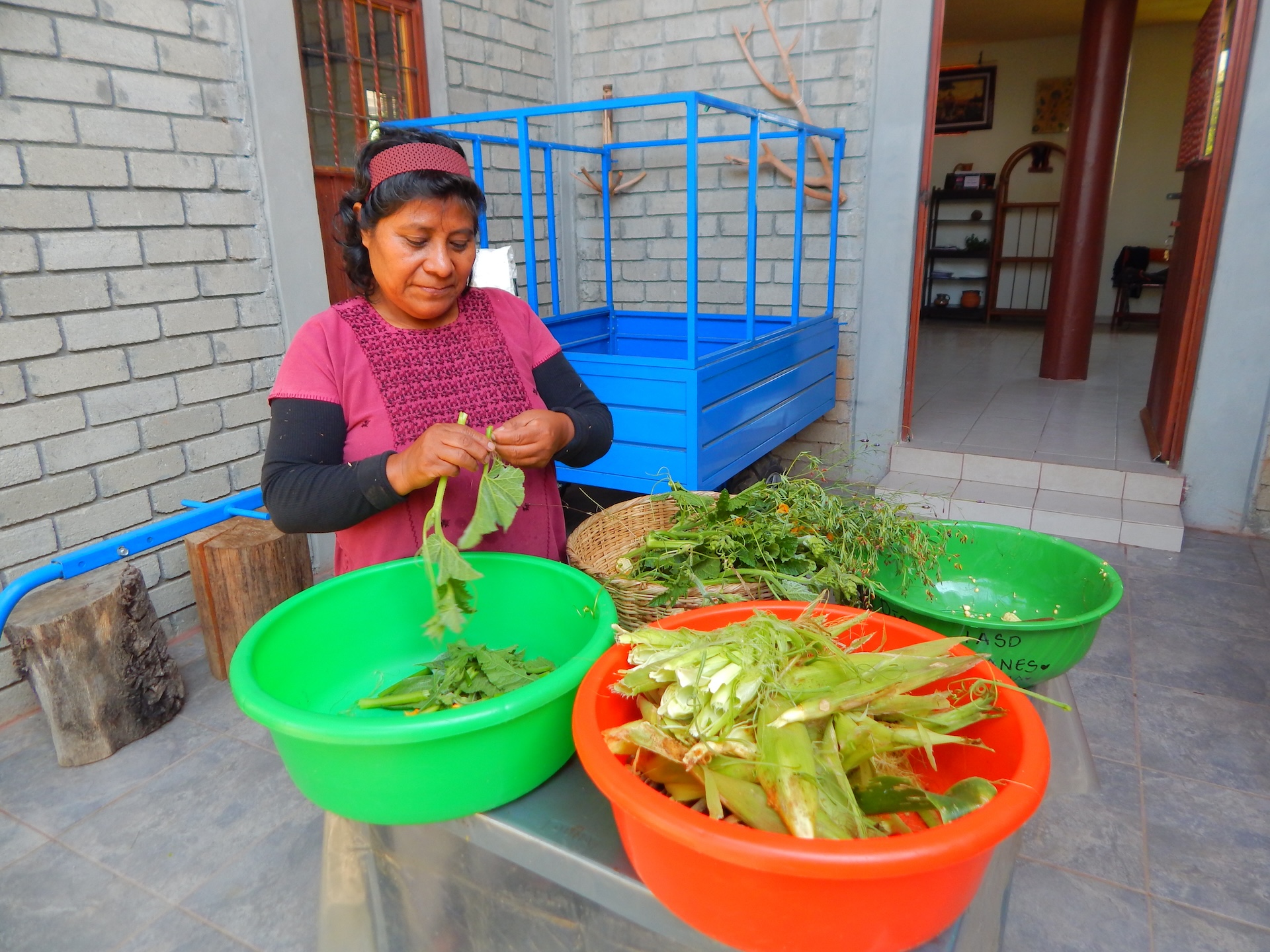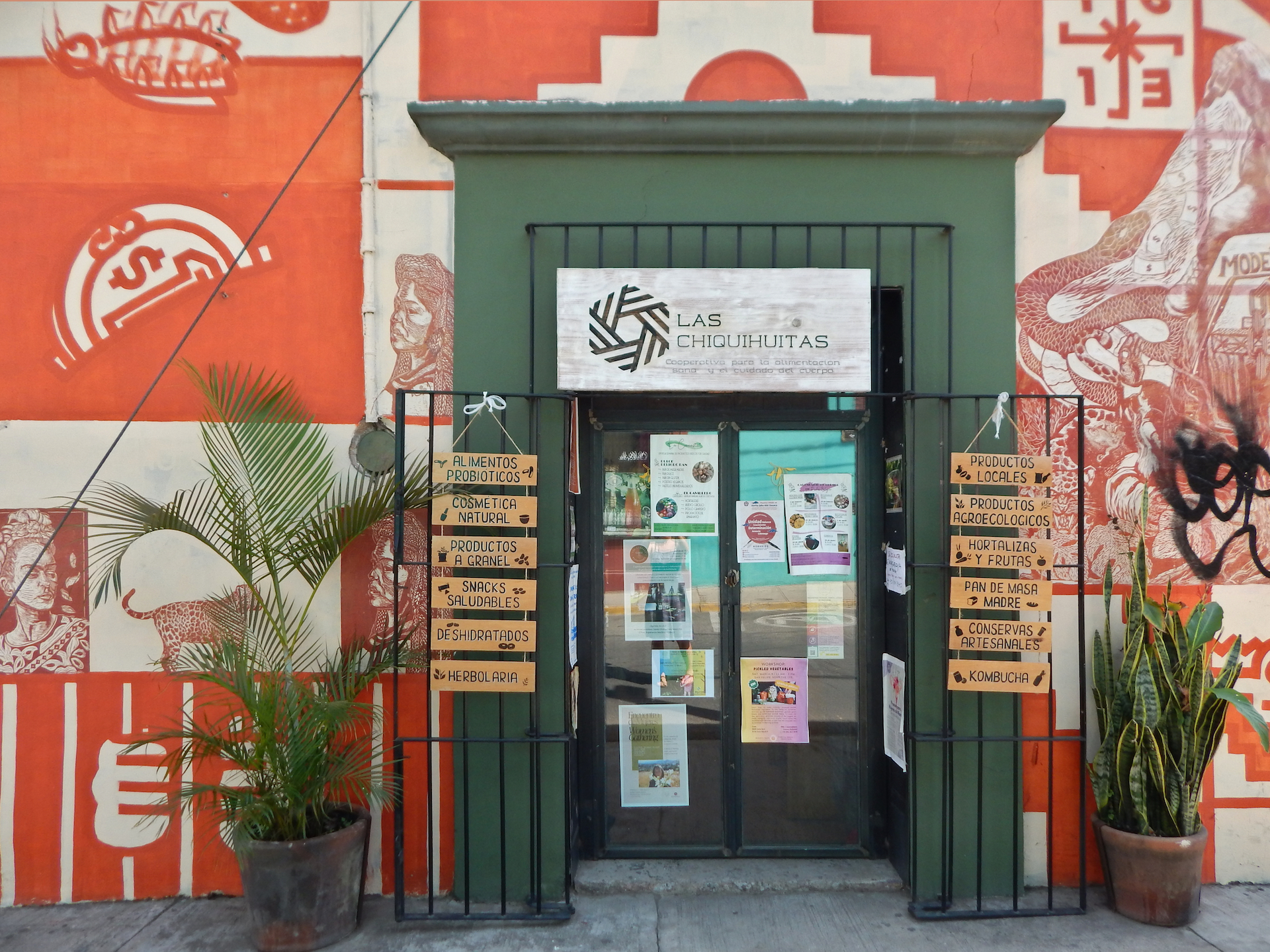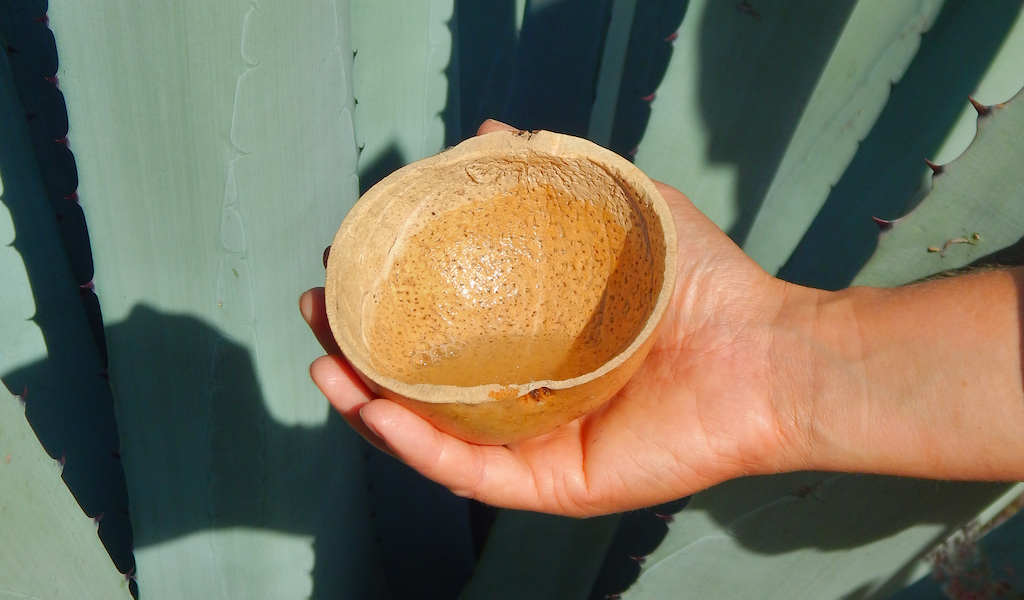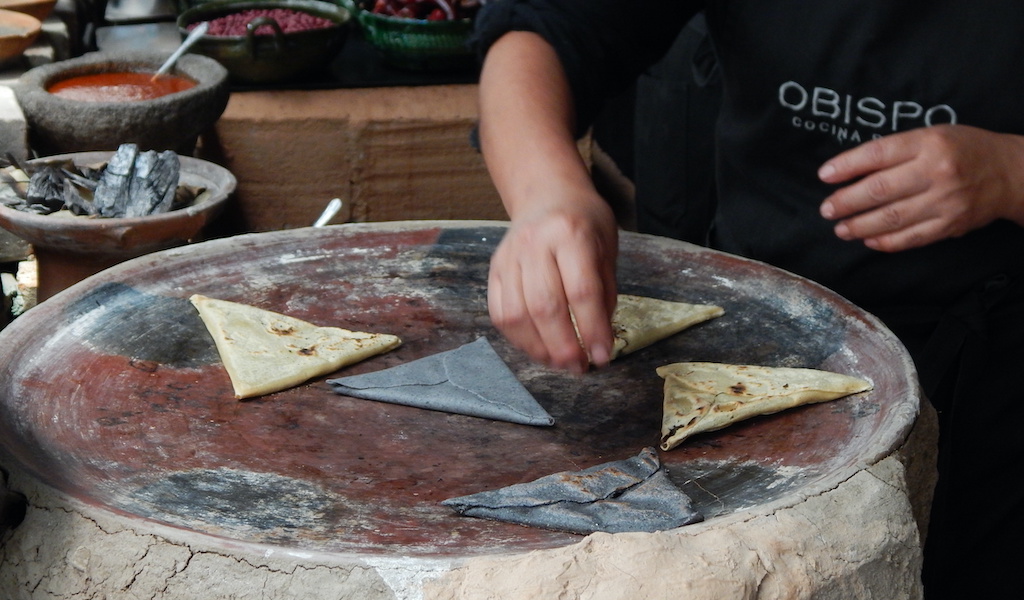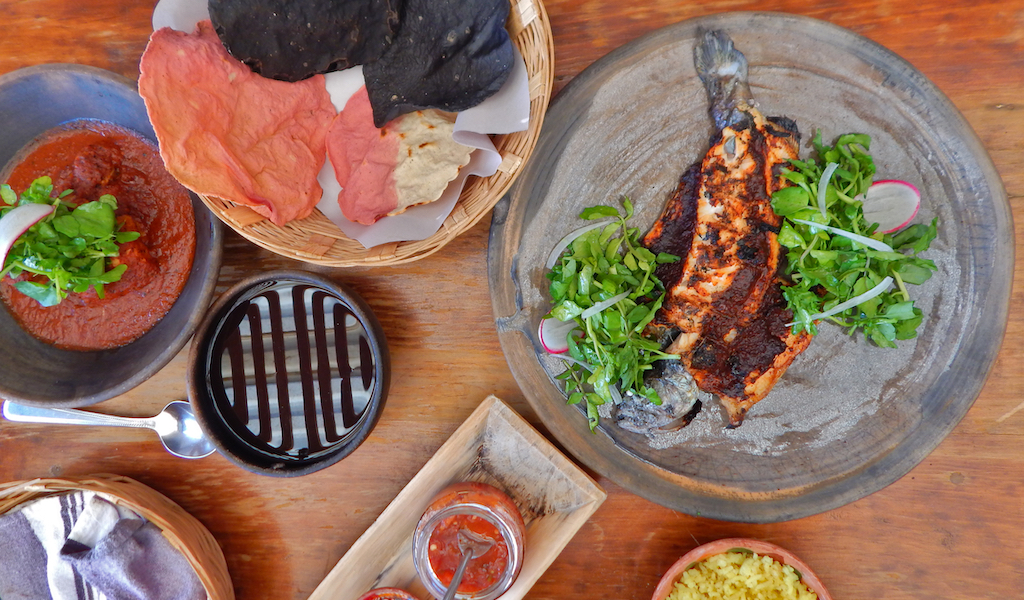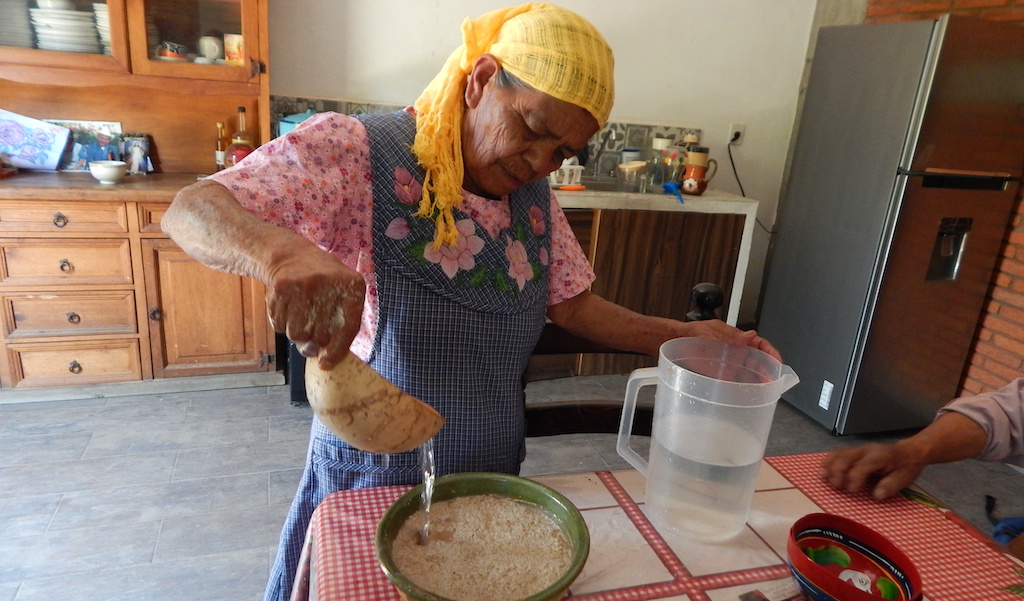We can't find the internet
Attempting to reconnect
Something went wrong!
Hang in there while we get back on track
Search results for "Lauren Rothman"
Oaxaca
Sopa de Guías: Oaxaca’s Rainy Season Soup
In early fall, Oaxaca’s landscapes are a study in green. Walking through the city’s colonial center, tall trees’ crowns explode in verdant glory, while vistas in the countryside are even more impressive, boasting an array of variegated grasses, deeply colored agaves, and, of course, stalk upon stalk of corn, heavy with plenty of ears of the country’s most prized aliment. It’s the end of the rainy season here in this southwestern state, the humid period that typically runs from June until October. And after a disappointingly dry season last year, farmers and home growers across the region are celebrating the success of their milpa, the ancient, complementary agricultural system of corn, beans, squashes, and wild and domesticated greens growing all together in interdependent and symbiotic harmony.
Read moreOaxaca
Las Chiquihuitas: Organic Collective Action
Las Chiquihuitas is a relative newcomer to Oaxaca’s organics scene that celebrates its two-year anniversary this month. A tiny sliver of a corner store located right smack-dab in the city’s historic center, the shop manages to pack a surprising amount of organic, local and lovingly produced foods within the diminutive confines of its four walls. A quick examination of Chiquihuitas’ lone refrigerator turns up a candy-colored array of seasonally flavored kombuchas and ginger beers stacked above a selection of buffalo milk butter and cheeses sourced from the Oaxacan coast, plus chunky glass jars of ferments ranging from classic sauerkraut to spicy kimchi. The store’s selection of dry goods might include shiny black beans, sticky, dark-brown blocks of the unprocessed sugar known as panela and jugs of fragrant virgin coconut oil. Happily, there’s a robust lineup of fresh produce, too, with juicy tomatoes, spiky pineapples and nubby potatoes peeking out of the black plastic crates dominating one of the store’s shelving units.
Read moreOaxaca
A&V La Casa del Pulque: Saving a Tradition, At the Source
Driving east from Oaxaca City, Mexico, into Santiago Matatlán – the town of about ten thousand souls that’s known as the “World Capital of Mezcal” – one’s vista is suddenly dominated by the color green. Across the landscape of gently rolling hills, enormous patchworks of planted agave fields supply the eye with an entire spectrum of verdure, from sage to emerald to jade. The large, spiky magueys, as they’re also called, are everywhere you look, their dusty shades contrasting with the brighter green of the grasses and cacti also dotting the region’s slopes. But we’re not here for mezcal. Instead, different agave beverages are on the menu today: fresh aguamiel and lightly fermented pulque, harvested daily on this land by fifth-generation owner Reina Luisa Cortés Cortés of A&V La Casa del Pulque.
Read moreOaxaca
Obispo Cocina Rural: Triangles of Happiness
Throughout Mexico, both foods and drinks are centered around corn, a tendency that’s most evident in Mexico’s wide variety of antojitos, or “little cravings,” small, portable snacks featuring some variation on the corn tortilla – of which the taco is undoubtedly the most well-known globally – antojitos are one of the joys of Mexican cuisine, and vary impressively across the country’s 32 states. In the southwestern state of Oaxaca, there’s no shortage of delicious antojitos – at breakfast, soft, steaming tamales wrapped in the region’s abundant banana leaves are the name of the game, while night owls have ample opportunity to crunch into a tlayuda, a giant tortilla folded over lots of shredded, mozzarella-like quesillo cheese, then griddled over hot coals until crispy on the outside and molten on the inside.
Read moreOaxaca
Luz de Luna: Ant-Powered Cuisine
It’s around noon on a Wednesday in Oaxaca, and we’re standing next to a huge, firewood-powered comal, that traditional Mexican clay griddle used to toast corn and cacao, blister tomatoes for salsa, melt stringy quesillo cheese inside the corn tortilla layers of a quesadilla, and so much more. Today, however, none of these more quotidian ingredients takes center stage on the blazing-hot, earthen red comal: Instead, Micaela Ruiz Martinez, 50, uses a small straw brush to sweep ants over the griddle’s surface, the insects dark, round rear ends resembling oversized black peppercorns. As a slightly herbal, slightly fruity aroma begins to waft up from the comal, Martinez, chef and owner of the bright, homey restaurant Luz de Luna (“Moonlight”), comments, “Chicatanas have a really unique flavor. There’s really nothing else like it.”
Read moreOaxaca
Liquid Assets: Tejate, Oaxaca’s Drink of the Gods
It’s not yet 11 a.m. on a May morning in Oaxaca City – typically the hottest month in this midsized capital of the southwest Mexican state – and the day is already fixing to be a scorcher. At this moment, we’re padding the streets of Oaxaca’s bustling downtown market district, and we can feel the heat radiating off the cement below our feet. Deciding the morning’s errands will have to be put on pause, we duck into one of the main entrances to the famed Benito Juárez market, where we know we’ll find Valentina and a big, brimming jícara – a hollowed-out gourd used as a no-waste drinking vessel – of tejate. We navigate past little stalls where vendors hawk such varied items as big, knotted balls of the milky, melty cow’s cheese known as quesillo; sweet, yeasty pan dulce sprinkled with colored granulated sugar; and big, round tortillas in two styles: soft and pliable (blandas) and crispy and crunchy (tlayudas).
Read moreOaxaca
Pochote Reforma: Oaxaca Organic
Whether they’re residents of or visitors to Oaxaca City, those who find themselves craving a deep bowl of caldo de res (beef soup), a foamy chocolate atole (a warm, sweetened corn and cacao drink), or simply a bit of chisme – gossip – can find all three at the Pochote Reforma. A weekly organic market uniting growers and vendors that hail from nearby towns such as Macuilxochitl, San Miguel del Valle, and Tanetze de Zaragoza, “el Pochote,” as it’s known locally, is one of Oaxaca’s most down-to-earth markets, offering visitors not only fresh and organically raised fruits and vegetables, but also a sense of community that has kept shoppers coming back after 20 years and five location changes.
Read more